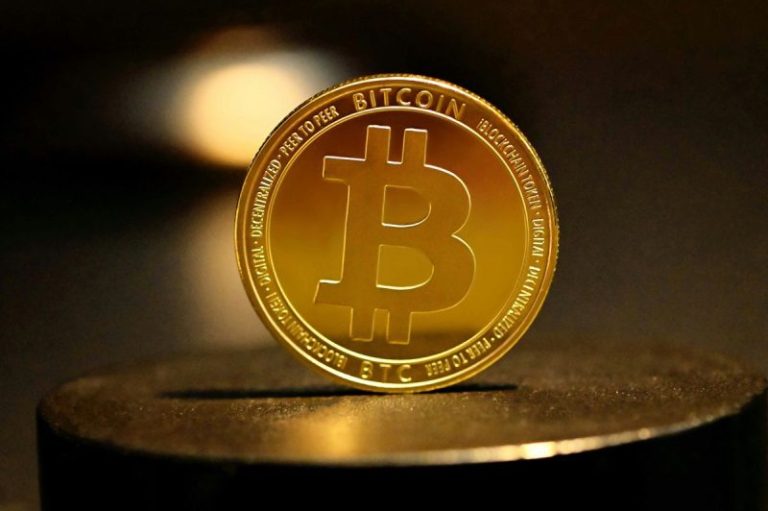Here’s a quick recap of the crypto landscape for Wednesday (April 23) as of 9:00 p.m. UTC.
Get the latest insights on Bitcoin, Ethereum and altcoins, along with a round-up of key cryptocurrency market news.
Bitcoin and Ethereum price update
Bitcoin (BTC) was priced at US$93,529.14 as markets closed for the day, up 2.2 percent in 24 hours. The day’s range has seen a low of US$92,078.75 and a high of US$94,122.31.
Bitcoin performance, April 23, 2025.
Chart via TradingView.
Fueledby the re-entry of institutional investment, the crypto markets appear to be headed towards a robust recovery; however, the long-term trajectory remains to be seen.
Ethereum (ETH) ended the day at US$1,785.14, a 5.2 percent increase over the past 24 hours. The cryptocurrency reached an intraday low of US$1,767.67 and a high of US$1,815.24.
Altcoin price update
- Solana (SOL) ended the day valued at US$150.05, up four percent over 24 hours. SOL experienced a low of US$149.31 and peaked at $153.47.
- XRP traded at US$2.22, reflecting a three percent increase over 24 hours. The cryptocurrency recorded an intraday low of US$2.20 and reached its highest point at US$2.29.
- Sui (SUI) was priced at US$2.98, showing an increaseof 21 percent over the past 24 hours. It achieved a daily low of US$2.89 and a high of US$3.06.
- Cardano (ADA) was trading at US$0.6981, up 6.3 percent over the past 24 hours. Its lowest price on Wednesday was US$0.6873, with a high of US$0.7138.
Today’s crypto news to know
Riot Platforms secures US$100 million credit facility backed by Bitcoin
Riot Platforms (NASDAQ:RIOT) secured a US$100 million credit facility from Coinbase (NASDAQ:COIN) on Wednesday (April 23), using a massive Bitcoin stockpile as collateral.
Data from Bitcoin Treasuries indicates that Riot holds 19,223 BTC valued at approximately US$1.8 billion, making the company the third-largest corporate Bitcoin treasury behind Michael Saylor’s Strategy and MARA Holdings.
“Riot has entered into its first bitcoin-backed facility, which provides us with non-dilutive funding at an attractive cost of financing,” said Jason Les, CEO of Riot, in a press release. “This credit facility is a key part of our efforts to diversify sources of financing to support our operations and strategic growth initiatives, with a view towards long-term stockholder value creation.”
Brandon Lutnick forms new Bitcoin investment vehicle
Brandon Lutnick, son of US Commerce Secretary and former Cantor Fitzgerald Chairman Howard Lutnick, will launch a listed Bitcoin investment vehicle through a reverse merger with Cantor Equity Partners, a special purpose acquisition company (SPAC). This is according to a Tuesday (April 22) report by the Financial Times (FT).
The newly-established entity, purportedly named Twenty One Capital, will be led by co-founder Jack Mallers, the CEO of Bitcoin-focused payments app Strike, and majority owned by Tether (USDT) and cryptocurrency exchange Bitfinex. SoftBank (TSE:9984, OTCPINK:SOBKY) will also own a ‘significant minority’ stake. Sources for FT say Tether will contribute at least US$1.5 billion worth of Bitcoin.
The company will also raise US$385 million through a convertible bond and US$200 million via a private equity placement, which will be used to acquire more Bitcoin. Eventually, SoftBank, Tether and Bitfinex’s investments will be converted from Bitcoin into shares in Twenty One Capital, with a price of US$13 per share for the private placement and US$10 per share for the convertible bond.
According to the report, Twenty One Capital will launch with 42,000 BTC, making it the world’s third-largest Bitcoin reserve. “With a visionary leader at the helm and backing from two renowned industry leaders, Twenty One is designed to help investors capture value from Bitcoin’s growing global demand and increasing institutional adoption,” Lutnick said in a press release on Wednesday. The deal values the new company at US$3.6 billion based on an approximate US$85,000 Bitcoin valuation. As of writing, Bitcoin is valued at US$93,808.31.
Trump to Host Exclusive Dinner for $TRUMP Token Holders
Lauded as “the most exclusive invitation in the world”, US President Donald Trump will host a dinner for the top 220 holders of his $TRUMP token in Washington, D.C. on May 22. News of the event, which was announced on the memecoin’s official website, sent $TRUMP’s valuation up by over 55 percent in under an hour. $TRUMP reached US$14.44 at around midday on April 23, its highest valuation since mid-February. As of writing, $TRUMP is valued at US$13.46.
Top token holders are required to link their wallets for holding verification. The top 25 holders will gather for a private reception with the President before dinner.
Around 40 million $TRUMP tokens, or roughly 20 percent of the tokens’ circulating supply, were unlocked on April 17, valued slightly above US$300 million at the time. $TRUMP reached an all-time high of US$75.35 on January 19, according to data from CoinMarket Cap. This was followed by an abrupt reversal and steady decline in Q1 to valuations between US$9 – US$7 in April.
Bitcoin ETFs see US$936 million in daily inflows
US-listed spot Bitcoin exchange-traded funds (ETFs) recorded their strongest day of inflows since January, pulling in a combined US$936 million on Tuesday (April 22) across 10 issuers.
Leading the charge were Ark & 21Shares with US$267.1 million, Fidelity’s FBTC with US$253.8 million and BlackRock’s IBIT, which added US$193.5 million.
Over the past three days, total net inflows into Bitcoin ETFs have surpassed $1.4 billion, signaling renewed institutional confidence in crypto markets. Analysts attribute the momentum to persistent inflation, a weakening US dollar and growing fears over geopolitical instability, prompting investors to turn to Bitcoin as a hedge.
While still volatile, Bitcoin is increasingly being framed as “digital gold,” with ETF flows suggesting it’s becoming a staple in diversified portfolios. This week’s influx also reflects optimism that regulatory conditions are maturing, particularly in the US, where ETFs are rapidly gaining legitimacy among mainstream investors.
Bitcoin becomes fifth largest global asset, overtakes Google
Bitcoin has climbed to a market capitalization of US$1.86 trillion, overtaking Alphabet (NASDAQ:GOOGL) to become the world’s fifth-largest asset by market value. The price of Bitcoin surged past US$94,000, helped by easing trade tensions between the US and China and renewed bullish sentiment across tech and risk-on assets.
This marks a symbolic milestone for the cryptocurrency, which has now outpaced several of the world’s most valuable tech giants. Analysts point to Bitcoin’s increasing correlation with macroeconomic tailwinds — such as falling bond yields and speculative interest in risk assets — as drivers of the recent price action.
Its breakout relative to the Nasdaq also suggests growing investor confidence in crypto as a parallel to tech. If Bitcoin maintains this trajectory, some believe it could soon challenge silver’s position as the fourth-largest global asset.
Trump backs crypto regulation, Trump Media eyes retail crypto products
During a public appearance, US President Donald Trump called for regulatory certainty in the crypto industry and vowed to provide ‘clear rules of the road’ for digital asset innovation.
His statement coincided with Trump Media & Technology Group’s announcement that it will partner with Crypto.com and Yorkville America Digital to launch retail investment products, including crypto-focused ETFs aligned with Trump’s “America First” platform. The planned offerings aim to capitalize on the president’s growing presence in the digital asset space following prior ventures like Trump NFTs and crypto-affiliated partnerships.
While no official ETF filings have been submitted yet, the initiative signals Trump’s commitment to making crypto a policy priority as part of his economic strategy.
Tesla reports US$951 million in Bitcoin holdings despite earnings miss
Tesla (NASDAQ:TSLA) revealed it continues to hold $951 million worth of Bitcoin on its balance sheet, despite posting weaker-than-expected quarterly revenue of US$19.34 billion.
The automaker’s Bitcoin holdings, totaling 11,509 BTC, remained unchanged during the quarter, with no buy or sell activity recorded. This comes as Bitcoin’s price dipped from late December highs, impacting Tesla’s valuation of its digital asset portfolio under the new Financial Accounting Standards Board rules.
These rules now require corporations to mark digital assets to market on a quarterly basis, increasing transparency but also exposing earnings to crypto market volatility. Tesla’s crypto exposure, while relatively small compared to its core business, still makes it one of the top public holders of Bitcoin globally.
Securities Disclosure: I, Giann Liguid, hold no direct investment interest in any company mentioned in this article.
Securities Disclosure: I, Meagen Seatter, hold no direct investment interest in any company mentioned in this article.










